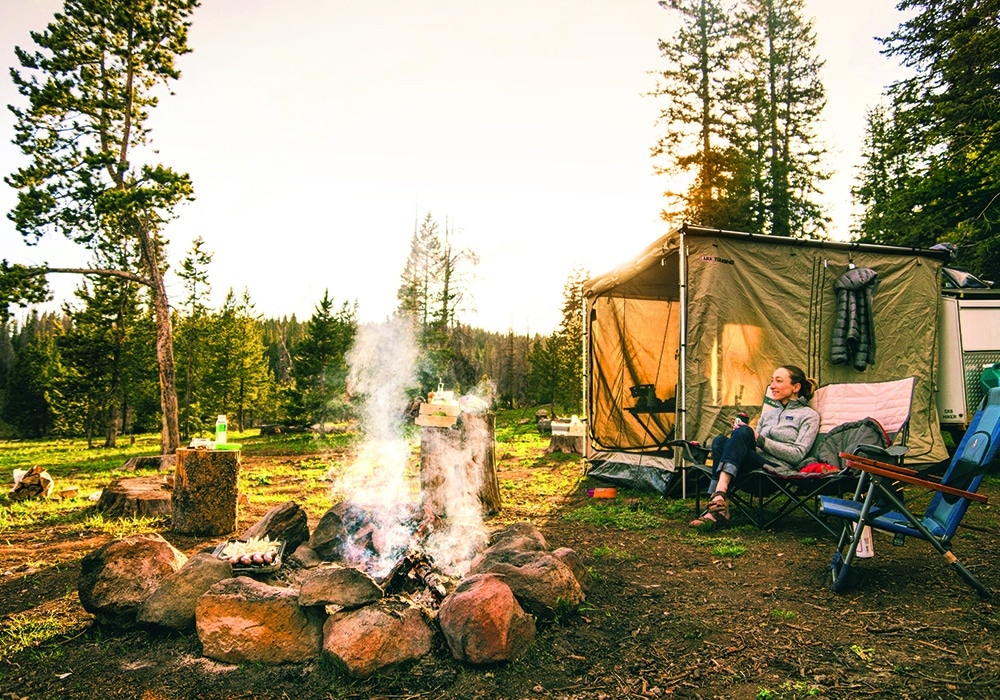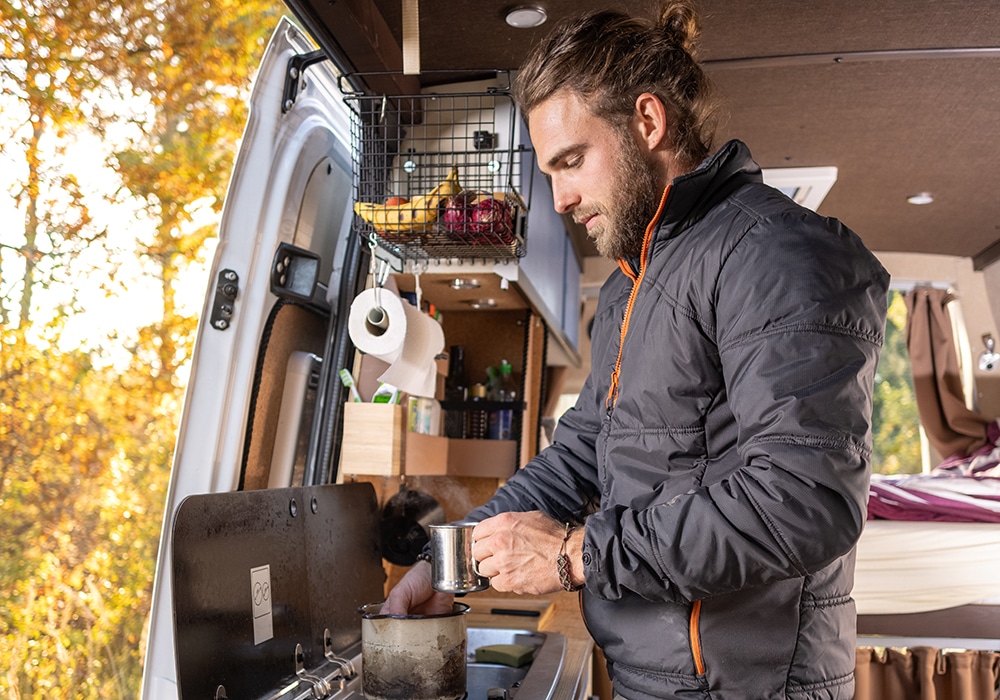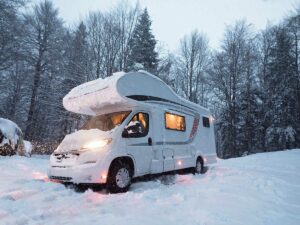RUG UP
There’s something wonderfully comforting about being tucked up in your RV when the temperature plummets outdoors. MCD columnist Liz Dobson investigates the art of heating your RV.
Just as we need to dress cosy during winter, it’s also important that your RV is wrapped up against the colder climates when travelling too. There are a variety of ways to effectively heat the inside of your mobile home, from a cheap and cheerful electric heater to a wood- burning fire used in some buses that have been converted to an RV. Most new caravan or mobile homes use standard gas (LPG) or diesel heaters that are available in a number of sizes and heat output, usually from 1.9-5.5kw.
LPG heaters tend to be the cheaper option and run off the same source as your cooking and hot water system. These heaters may be more suitable for travellers who aren’t on an extended trip, as LPG is not always readily available and can be expensive if used for longer periods of time.
Diesel heaters can run from your vehicle’s tank, or from a fuel tank of their own. They may be more expensive to start with than LPG, but are significantly cheaper to run. Diesel heaters are ideal if you’re spending a lot of time in your vehicle during winter. It’s worth noting that if you’re upgrading your caravan heater, it has to have an outside exhaust and be certified for use in New Zealand. While gas or diesel heaters can be expensive, there are other cheaper (or free) ways to heat your mobile home, and if you want to camp off-grid, then you are going to need a few smart ideas too.

HOT HEATING HINTS
1. Start with the areas that let out the most heat: your windows. Places like Mitre 10, Bunnings and the Warehouse sells simple indoor window insulation kits from as cheaply as $28.29. If you can’t get to a shop, using a simple plastic strip can temporarily cover any cracks or holes.
2. Cover the windows with thermal curtains or blinds. You can also buy a reflective windscreen cover that fits your vehicle – this should cover the inside of the windscreen as well as the driver and passenger door windows.
3. Place cut-to-size foam in floor and ceiling vents to keep heat from escaping. Again, if you’re caught short, simple tape, or even a pair of pants can cover vents and block cold air from coming in.
4. Make the most of solar power. Park in a sunny spot during the day, and let the heat of the sun’s rays warm your RV. Solar power panels will then harness that energy to run your electric heater once the sun goes down.
5. When showering in your mobile home, leave the door open so that the heat can spread out into the van.
6. If you’re going off-grid, consider installing a generator. This will give you instant power as long as you have enough fuel. The downside is that most generators can be noisy.
7. Use an electric blanket on all beds, and make sure you’ve got plenty of blankets or a thick sleeping bag.
8. Check to make sure weather-stripping around doors and windows isn’t torn or frayed. Gaps and wear and tear can be fixed with sealant.
9. If you’re planning on travelling often in cold weather, you might want to look at RV insulation. Fibreglass is great for maintaining temperature consistency, but there are plenty of other options like foam board and reflective foil.
10. Have the prevailing wind hitting the rear of your vehicle, and try to park up in a relatively sheltered spot.
ADVENTURES IN COMFORT
Aussie road tripping blogger My Big Rig Adventures, Emma Earthwander, has a 2015 21 foot Jayco Starcraft Outback towed by a 2005 Nissan Patrol 4.8L. Emma and her two children, Dominic and Indii, have travelled full-time around Australia since 2016, occasionally parking up for an extended period of time. She prefers to live off the grid, so has great ideas for how to heat your caravan (or motorhome). “One really simple method of heating your caravan is to cook inside,” says Emma. “You wouldn’t think that cooking in the van would add that much extra heat, but I can tell you that it certainly does.
Think back to those hot summer days sweltering in the kitchen at home as you’re cooking up a meal. Now imagine all of that precious heat being trapped inside of your caravan on a cold winter’s evening. “Although you want to keep the heat in, you’ll still need to have ventilation in the caravan as well as turning on the range hood to reduce condensation in the air,” says Emma.

Modern day caravans come well insulated in the walls and roof, but often the floors are not so well protected. “It’s amazing how much cold will rise up through the floors,” she says. “Having rugs on the floor will cut heat loss, which will go a long way in holding the heat in and the cold out. “If you want to take it a step further, you can cover the floor in removable carpet. Measure your floor space, head to the carpet section at your local DIY shop, and get some pieces to cut to size.
Carpet tiles are another great option. “Double-sided tape, velcro or non-slip matting are all helpful in keeping your temporary floor coverings in place,” she says. Once the weather warms up, you can easily remove the carpet and roll it up for next winter. Emma says that using your awning on the side of your caravan is a great way of getting extra insulation and protecting and preserving heat. “An annex or awning walls will also stop or reduce a gust of cold air from entering the caravan every time someone opens the door.”
She also suggests that to add some extra insulation to the awning side of your caravan, consider getting some walls or privacy screens for the awning sides. “Not only do they add another layer of insulation, but they also create an effective barrier against the wind and cold. “If you know you’ll be set up for extended periods of time in a cold climate, I’d seriously consider getting a full annex with draught skirts,” she says. “This will create another warm bubble or ‘room’ to hang out in, which is protected from the cold, wind and rain.” If you want to do this, add an extra groundsheet, matting or rubber flooring to stop so much cold coming up through the ground. Also, use a portable gas heater in the enclosed outdoor space for a toasty experience.






